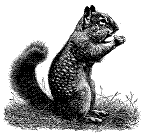Vertebrate Pest Conference: Proceedings

Vertebrate Pest Conference Proceedings: 12th (1986)
Date of this Version
March 1986
Document Type
Article
Abstract
Enclosed and insulated commercial poultry buildings provide ideal habitat for supporting unusually large populations of the house mouse (Mus musculus L.). Mice cause damage to various structural and operational components of poultry facilities; thus, they are of economic significance as well as general nuisances. Effective mouse control programs in poultry operations are often difficult, complicated, time consuming and inefficient due to various environmental and operational factors intrinsic to commercial poultry facilities. The significance of the house mouse as an economic pest in poultry operations is discussed via the results of a rodent control survey of 161 commercial poultry operations in Indiana. Survey data are presented concerning mouse problem incidence and severity, mouse damage, and mouse control tools and methods operators judged most successful. A research project aimed at developing more cost-effective and efficient methods of controlling mice in commercial poultry operations was begun at Purdue in 1985. The project involves the development of a novel rodenticide baiting strategy utilizing customized PVC anticoagulant bait stations, second-generation anticoagulant baits, and a "time-pulse" baiting strategy. Preliminary field trials of this baiting technique have produced population reductions of 78.8% and 74.4% in two poultry houses following a one "pass" application rate. Research addressing additional application rates is continuing as well as investigations into modifications of this baiting strategy for application in other types of poultry and livestock operations.

